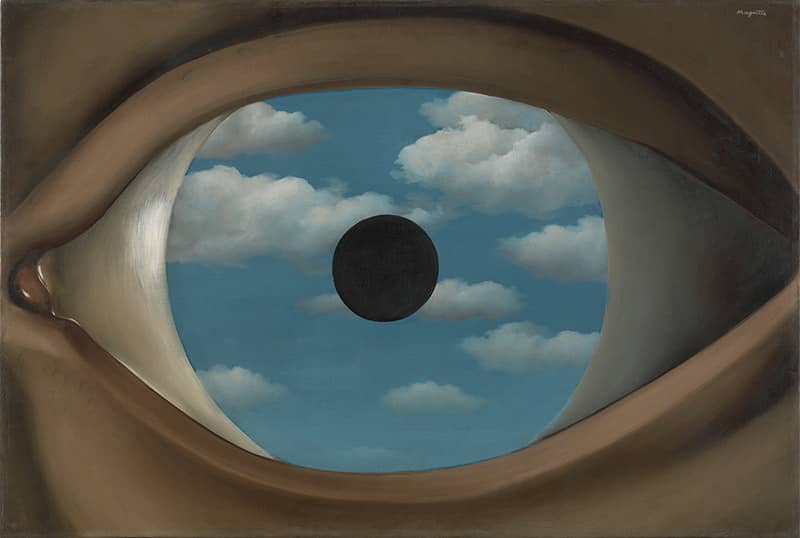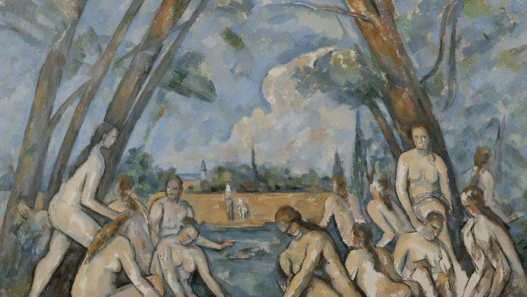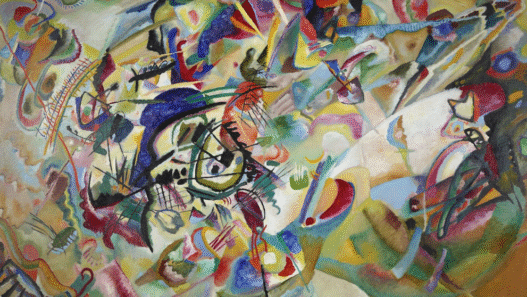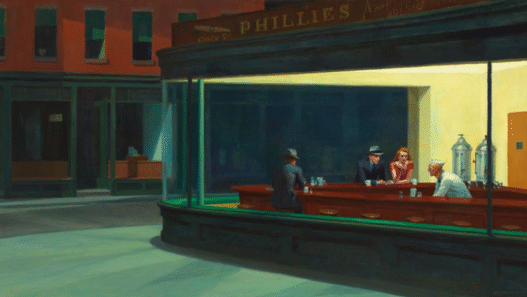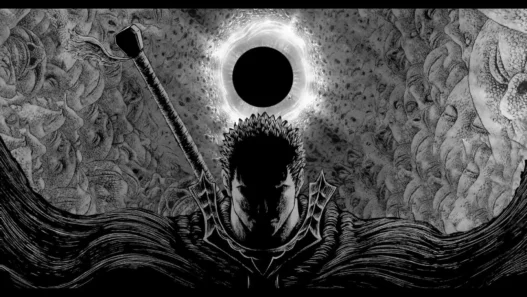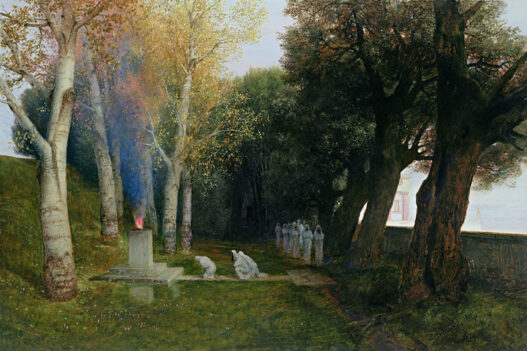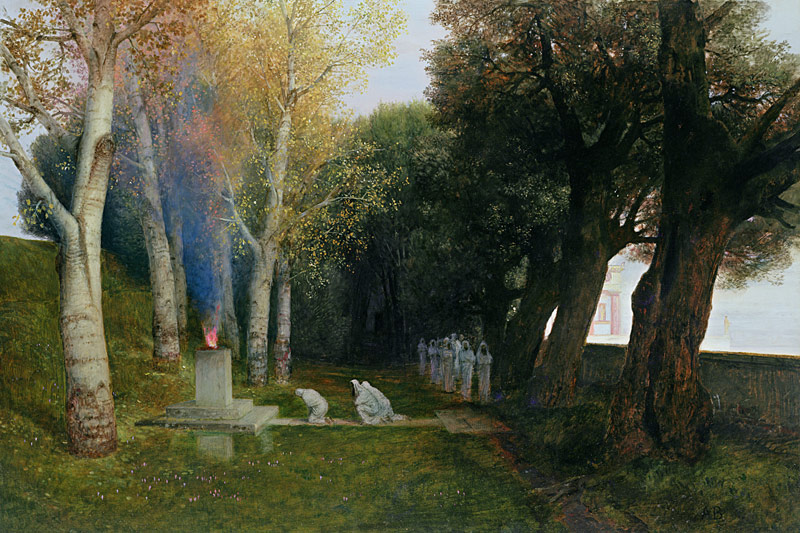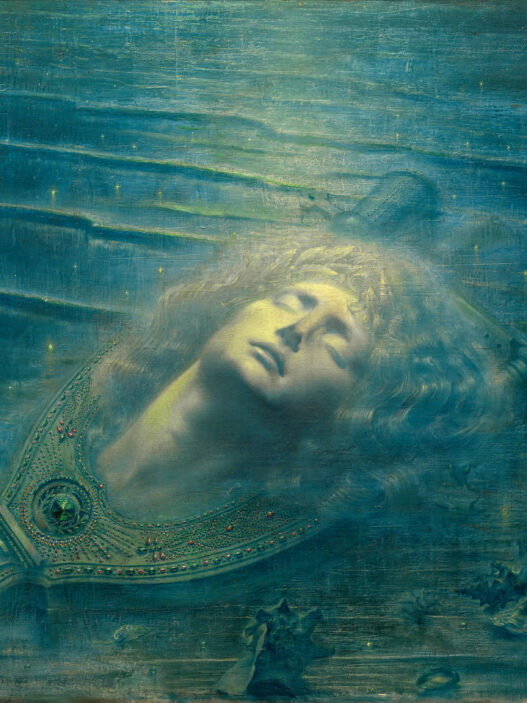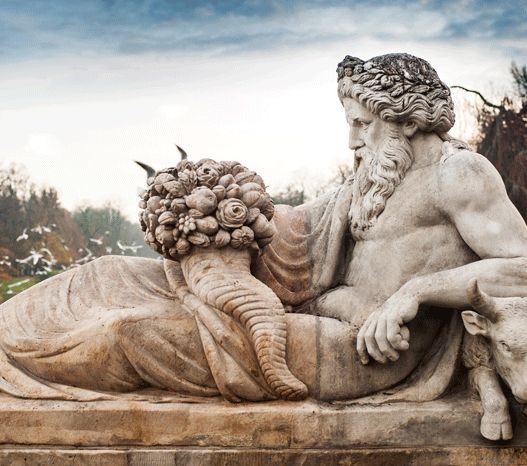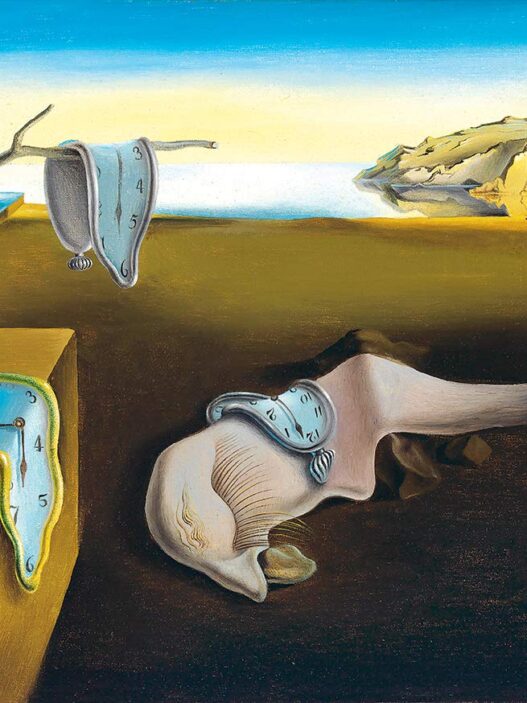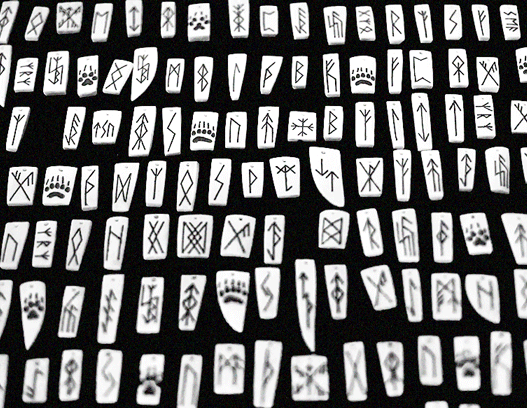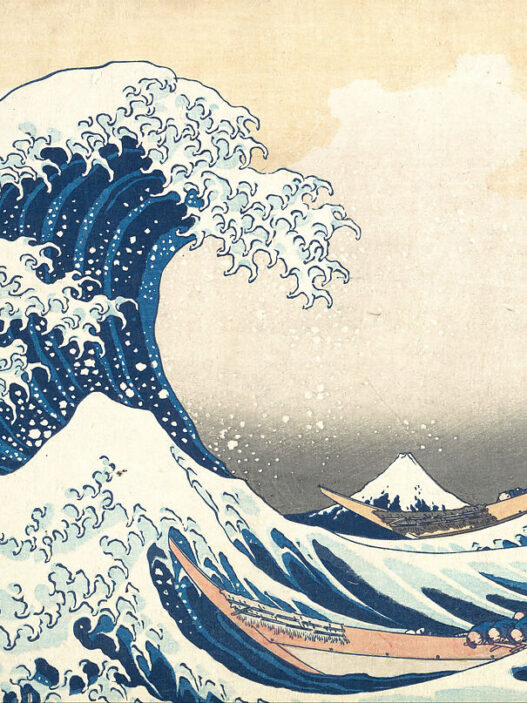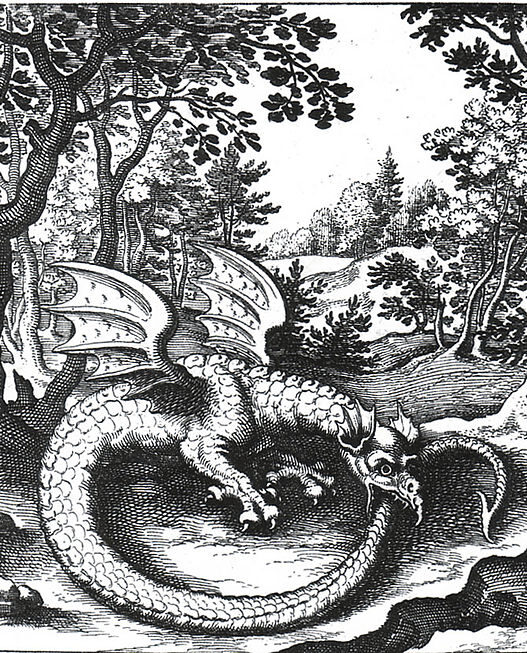Let’s be honest: most classical art is beautiful, but a little…dull. And then there’s Arnold Böcklin’s The Sacred Grove. Painting forests like they’re haunted cathedrals and temples like they’ve been abandoned by the gods themselves.
At first glance, it’s just a moody landscape. But stay with it, listen closely to the sound of silence, because this painting is loaded with forgotten symbolism, hidden power, and possibly a critique of everything we think is sacred.
So what are we looking at?
A dense, shadowy forest with shafts of light breaking through.
A central ruined temple sits quietly in the trees, partially sunlit.
Tiny human figures in robes approach or stand still near the structure — giving scale, but also a ritualistic feeling.
The Forest Isn’t Just Background — It’s the Main Character
Forests, in mythology, are never just trees. They’re places of transformation, danger, rebirth. Think of Dante, fairy tales, or ancient druids. You go into the woods, and you never come out the same.
In Arnold Böcklin’s forest, nature is sacred — not because it was made by a god, but because it outlives them.
Ruins in the Wild or Symbolic Religion in Decline?
Böcklin was painting art with symbols throughout the late 1800s, at a time when the church still dominated public life. In the meantime, Darwin and Nietzsche were already ripping holes in the old worldview.
This painting feels like a funeral for organised religion. There is a stirring of fragmented disruption floating around the figures.
Who are these tiny figures approaching the temple?
They look like pilgrims, but they’re too late. The gods have already left.
And the temple itself? Half in shadow. Half in light. Like a memory that refuses to die.
Arnold Böcklin’s figures are never just people. They sit beyond the simple subject matter often surrounding them. They’re symbols, archetypes, or ghosts of forgotten ideas.
Unlike other painters of his time, he rarely uses the human form to express realism. Instead, he uses it to unsettle, invite questions, or represent something metaphysical.
But at the same time, relatable.
Böcklin’s Sacred Grove in Context
While Böcklin stands at the heart of Symbolist painting, his work shares resonant stylistic and thematic threads with contemporaries like Malczewski, Redon, and Moreau—but with his own distinct voice:
In The Sacred Grove (c. 1882/1886), nine white-clad figures, priests, druids, or worshippers, move in ritual around a glowing altar-fire beside an ancient temple ruin These aren’t portraits; they’re spiritual vessels, mute, humble, and almost ghostly. Their anonymity invites you to become one of them, stepping into a sacred, liminal ritual .
Behind the cloaked figures, a crumbling classical temple emerges from the forest, Greek or Roman in style, but abandoned, reclaimed by nature . It’s not just a scene; it’s theology in decay. The altar and fire point unmistakably to ritual, yet the wild wood is winning. Civilisation gives way to the primal. Böcklin captures divinity in decomposition.
Unlike Redon’s dreamlike subconscious or Moreau’s jewel-toned opulence, Böcklin treats the forest as a sacred protagonist. Dense, dim, alive trees aren’t background; they’re guardians of secret wisdom, a nod to ancient oracle groves like Dodona, where trees spoke prophecy. Here, myth isn’t picturesque, it’s immersive.
Böcklin once asserted that art should summon realities “not perceptible through reason and the senses. The Sacred Grove embodies this. It’s not about religion or history; it’s about the invisible pulsing beneath.
Like Moreau and Malczewski, myth becomes metaphor: symbol, allegory, internal landscape.
Why It Resonates Today
Timeless tension: ritual vs nature, civilisation vs decay.
Modern relevance: we still crave what can’t be named, yet feel our traditions crumble.
Emotional depth: the silent figures evoke community, loss, belonging.
“This is sacred. This is yours. Don’t look away.”
If you’re interested in learning more about Arnold Böcklin’s life beyond art, read more here.
